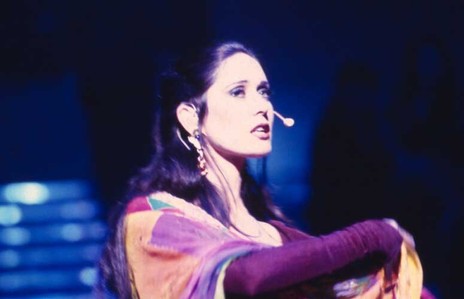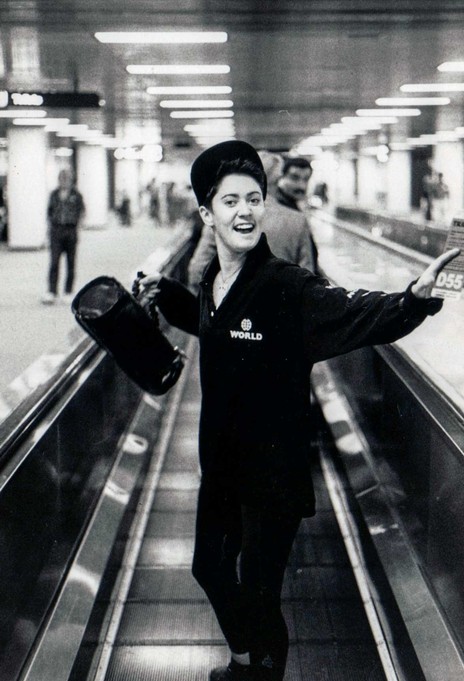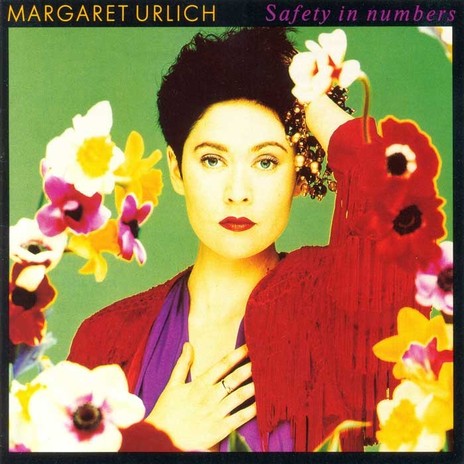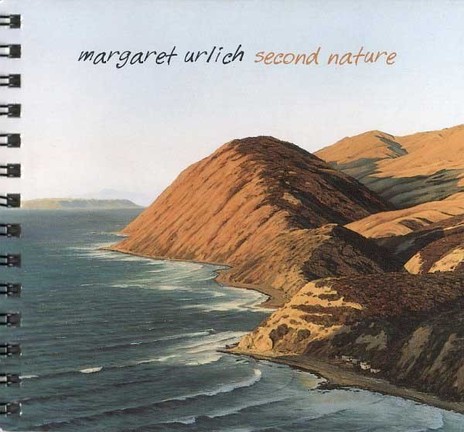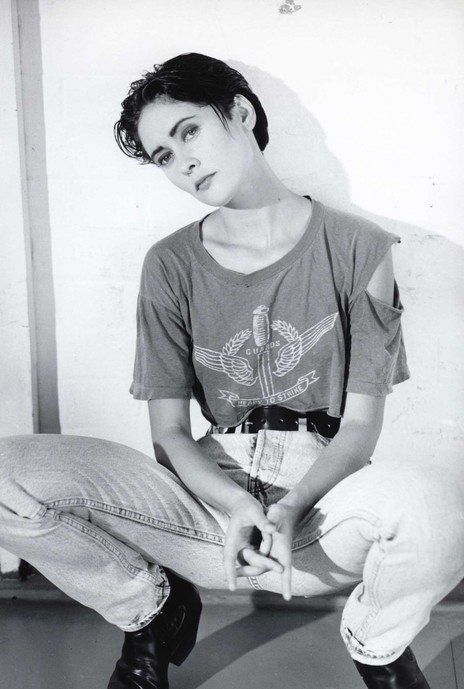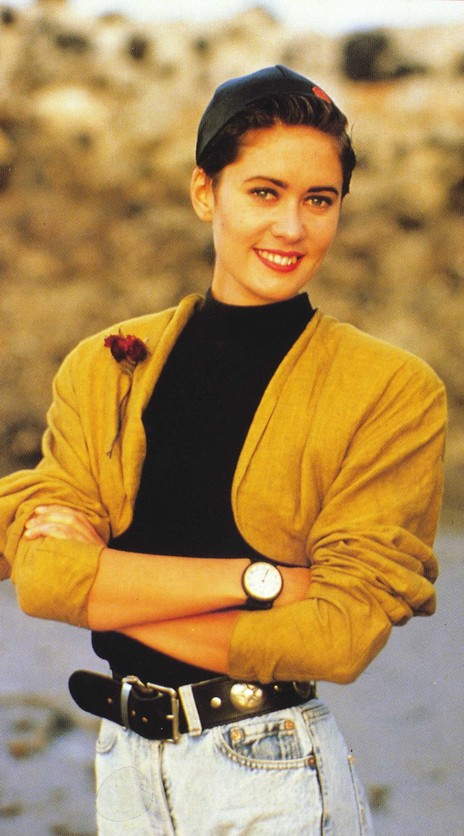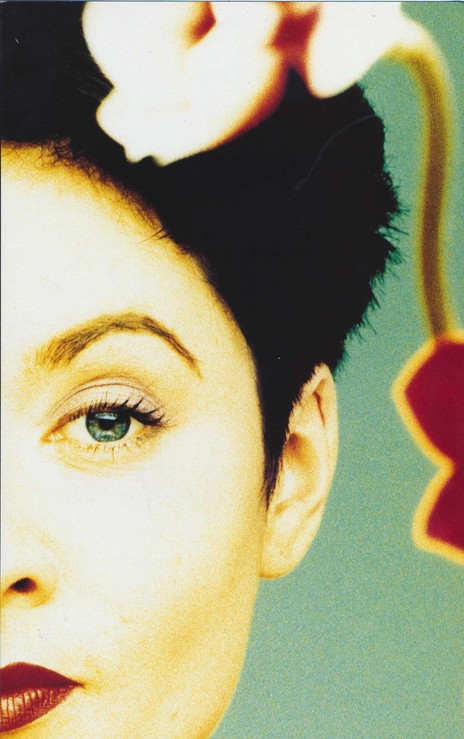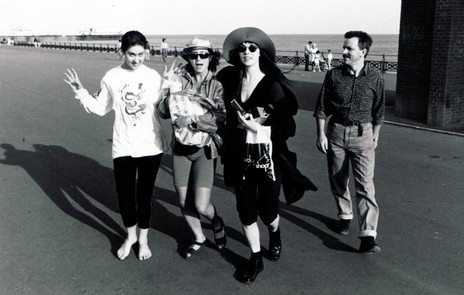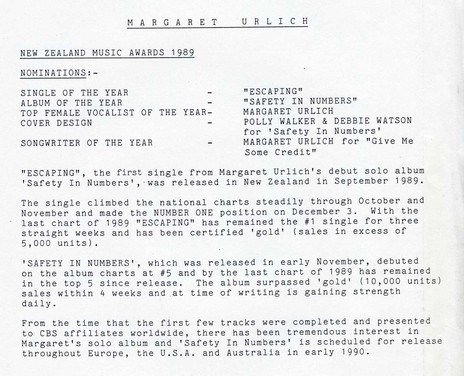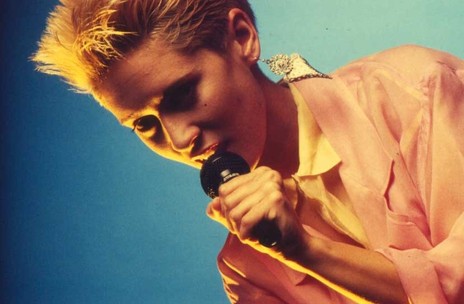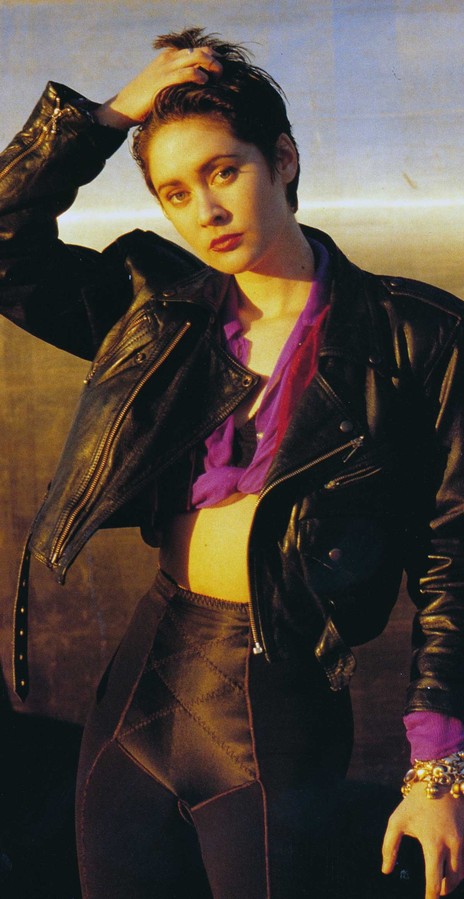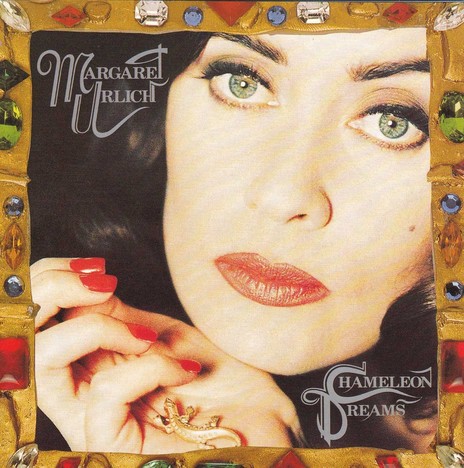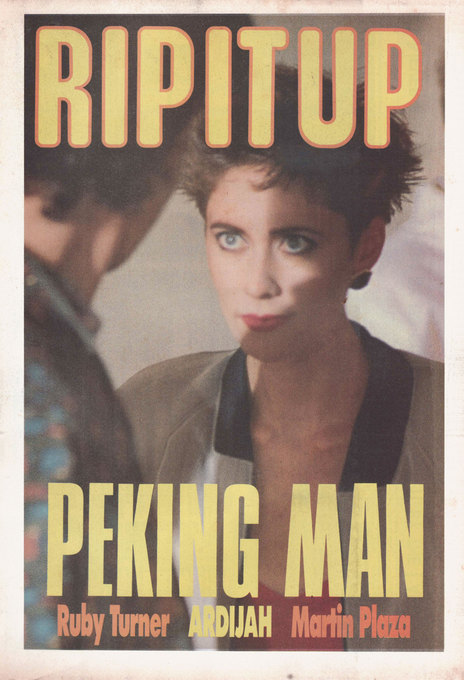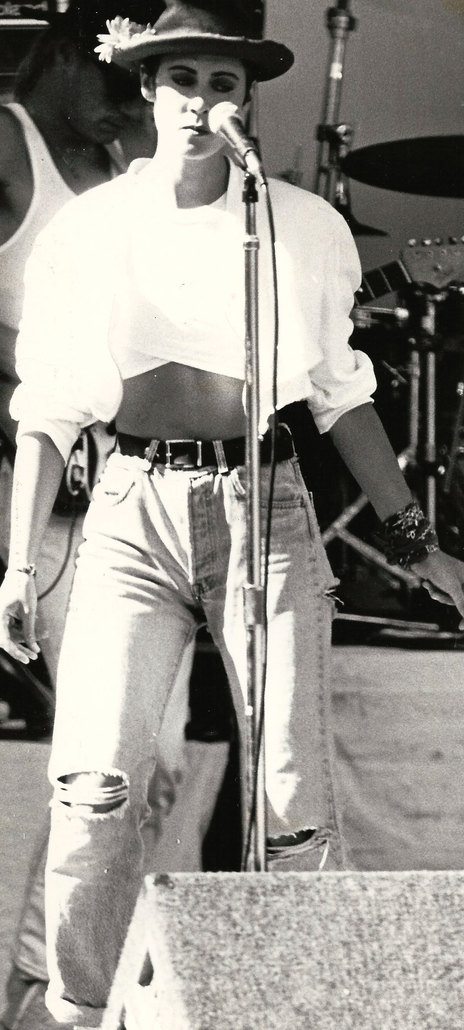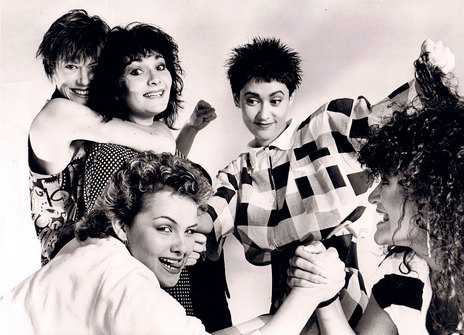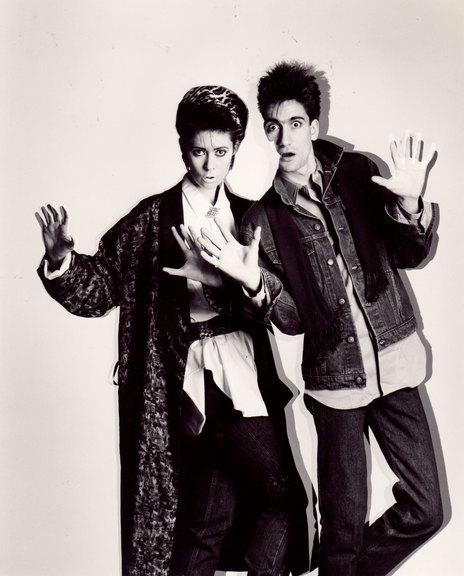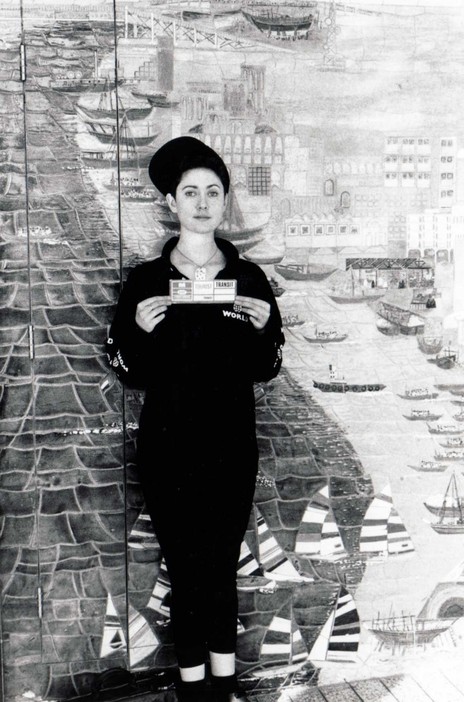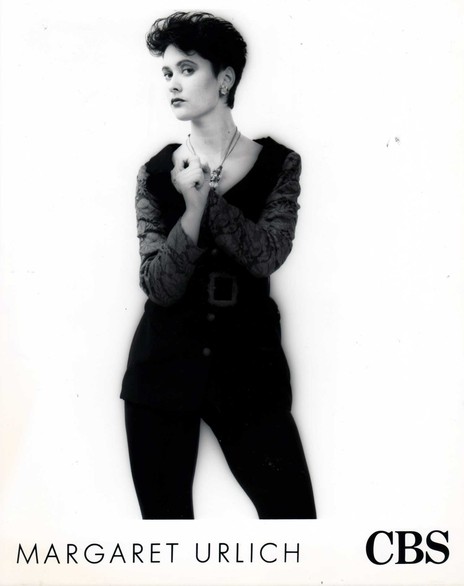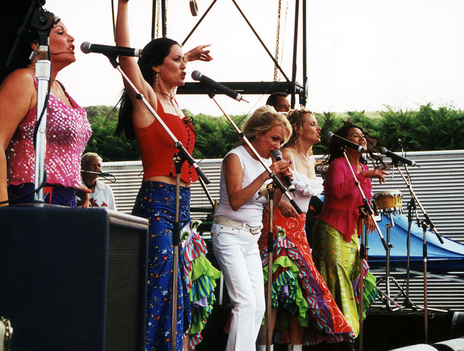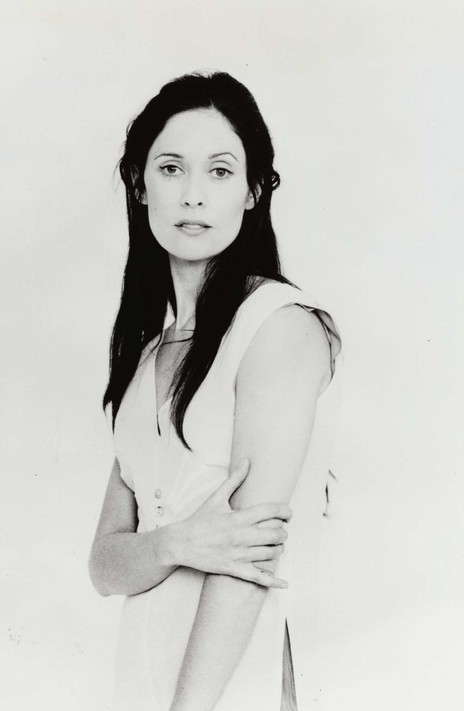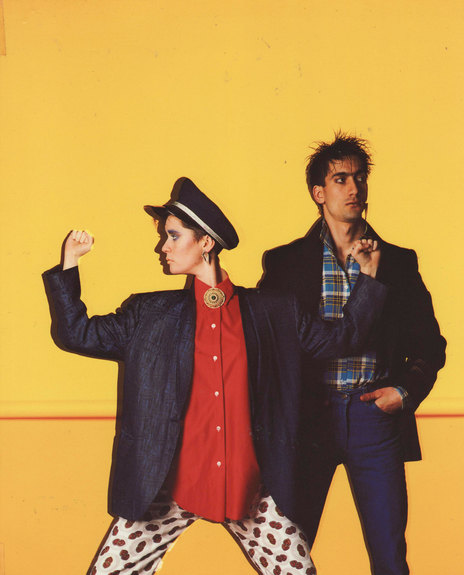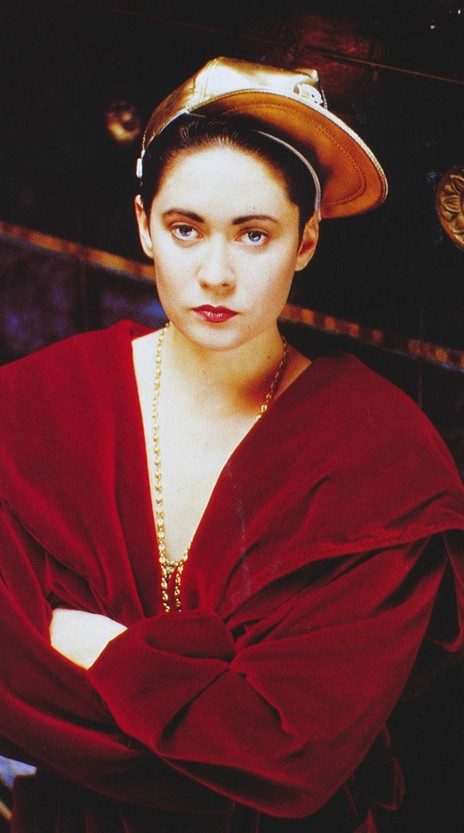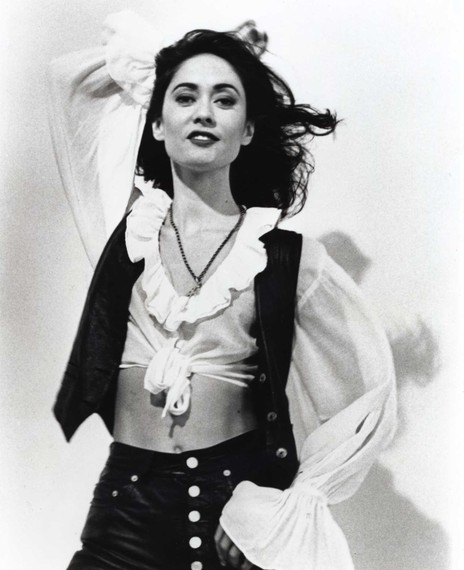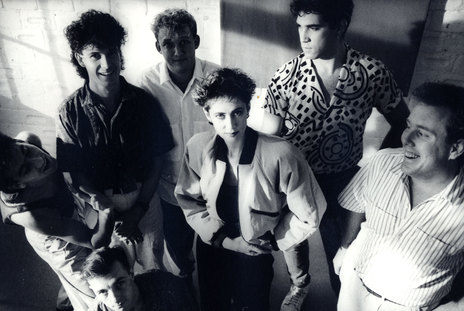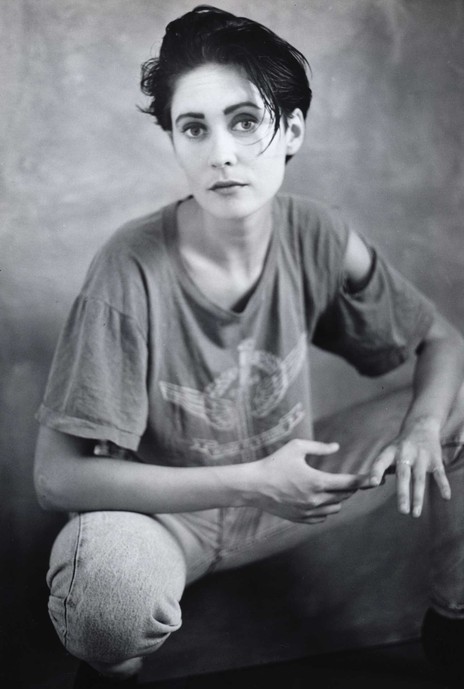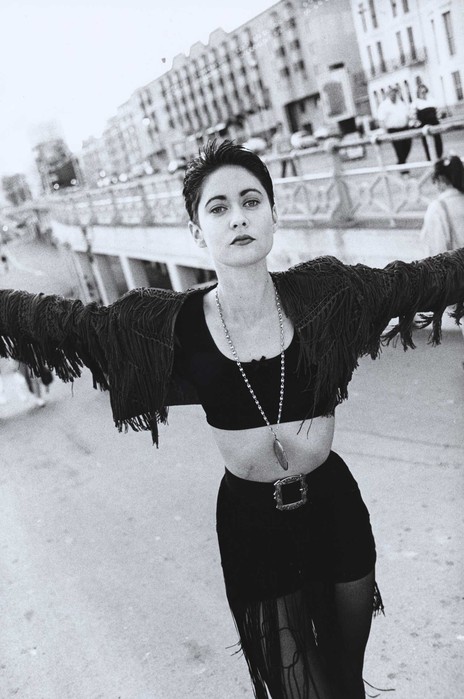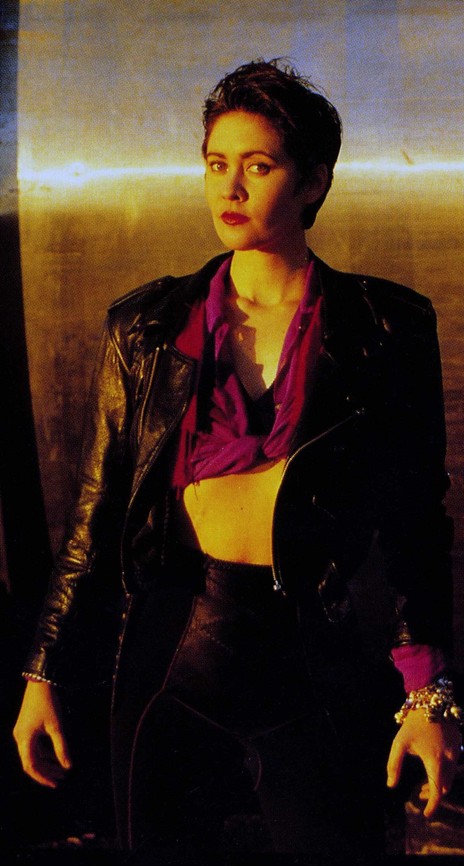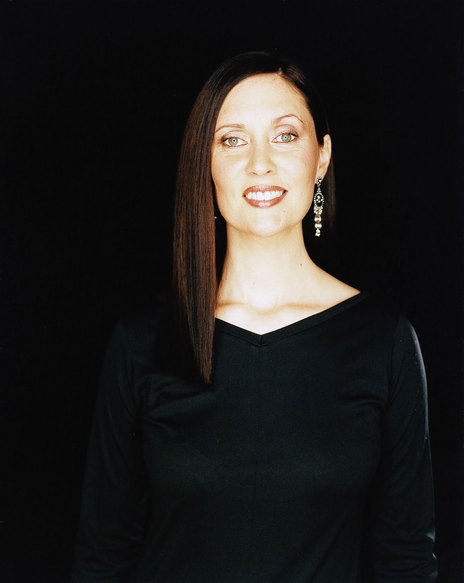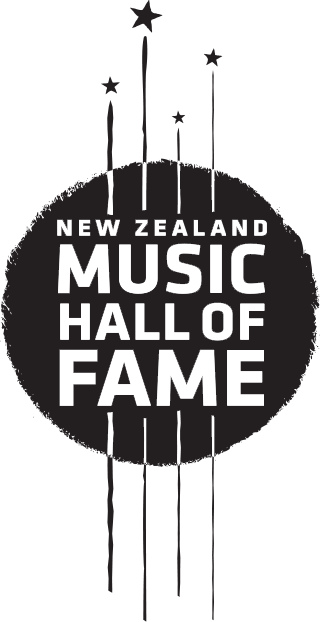As Margaret embarked on her solo career, she was hit by personal tragedy, late in the first half of 1987 – her youngest sister took her own life. There were seven children in the family and they had to face the grief of losing their youngest.
After this traumatic event, Margaret found a support group, known as When The Cat’s Away. She loved working with her friends, although her own solo album was her priority. The initial A&R work on the album was done in New Zealand, while the singer was managed by the Auckland-based, former CBS Records A&R manager, Gilbert Egdell. “Peter Bond, a South African, he adored Margaret – he authorised everything – we spent a fortune on the first album.”
In the rock landscape of Australian music, the funky hit single by The Rockmelons, ‘New Groove’ (1987), was refreshingly multi-cultural sounding for Margaret: “I heard an album producer Robyn Smith did with the The Rockmelons, which was really good.”
In May 1988, Margaret visited the UK with manager Gilbert Egdell and photographer Kerry Brown. Margaret had a positive first meeting with the English producer Robyn Smith and she also met London CBS staff.
Brown had shot numerous stunning images of Margaret that captured her unique, modern look. With her short hair, the images were deliberately androgynous at times. Brown took photos, with an album cover in mind, in London and Brighton, with styling and designer threads by New Zealand fashion designer Megan Douglas, the daughter of the politician Roger Douglas.
Robyn Smith was hired for the project. “The project was then a New Zealand project,” recalled Egdell. “But Australia was funding it. Producer Robyn Smith, he took charge of it. Part of the idea of using a UK producer was we wanted it to sell in the UK.”
In September 1988, the recording of the album got underway in Sydney and it became clear that an Auckland-based manager would not work. “CBS Australia took complete control of the project prior to the album’s release,” said Egdell.
Margaret reflected on her move to 1980s Sydney: “There’s no Pacific Islanders there and I think that’s quite strange because my dad’s half Māori and I’ve always had that influence. It’s totally Whitesville and that’s reflected in the music as well. There’s no soul music, it’s very much rock and roll. There’s people who want soul music but the radio won’t play it, it’s such a male rock tradition there.” (Rip It Up, October 1992)
Robyn Smith with fellow Brit Barry Blue authored the songs ‘Escaping’ and ‘Guilty People’ for the album. Smith and Blue had previously written two tracks for the 1982 Heatwave album Current that Blue had produced. Although Smith had worked in the funk field, soul-influenced songs on Safety In Numbers were more suited to pop radio than the dancefloor.
Margaret Urlich has said that when young, she chose to have short hair so she would be taken seriously. “It is such a male dominated industry that I didn’t want to be a bimbo. I’m a serious musician first, that’s my job, whether I’m a male or female is of no consequence. I got to the point where I thought, ‘Margaret, you’re attractive, why are you trying to make yourself not be attractive.’ ” (Rip It Up, October 1992)
Margaret had a well-established fan base from the Peking Man hits and the popular When The Cat’s Away tours.
Although Kerry Brown had done earlier shoots for the cover of her debut album, it was decided that a re-shoot with another New Zealand photographer, Polly Walker, would achieve a more suitable album cover image.
In 1988, Margaret found time to guest on the Dave Dobbyn single and video ‘Love You Like I Should’ from his Loyal album and some Australian Dobbyn tour dates. He contributed the song ‘Open Up’ to her album.
Australia may have been in the driver’s seat in the financing and the completion of her debut album but New Zealand CBS had the sales advantage, in that Margaret had a well-established fan base from the Peking Man hits and her in-concert exposure via the popular When The Cat’s Away tours. Margaret’s biggest fan at CBS in Auckland, Murray Thom, had moved on to sell personalised number plates but new managing director Michael Glading was equally committed to the project.
The singer had created a radio-friendly debut album and the first single, ‘Escaping’, was released October 6, 1989. It went to No.1, staying there for three weeks, with an impressive 19-week stay on the NZ Singles Sales Chart. The album was released on the first of December and reached No.4 on the NZ Album Sales Chart. On 9 February 1990 the single ‘Number One’ was released and it achieved No.10 on the NZ Singles Sales Chart. Having arrived in time for Xmas, the album had soon achieved Platinum sales (15,000 units) and Margaret dominated the 1989 NZ Music Awards, winning Album of the Year, Single of the Year for ‘Escaping’, Best Female Vocalist and Safety In Numbers won Best Album Cover for photographer Polly Walker and designer Debbie Watson. Margaret was also a winner in the Best Group category with When The Cat’s Away.
While her debut album was massive in her home country, Margaret was only big in Adelaide (well ‘Escaping’ was Top 20) in Australia. When Margaret spoke to New Zealand’s Shake! magazine in April 1990, ‘Escaping’ was only bubbling under on the Australian sales charts. With the single at No.1 in New Zealand she told Shake! magazine in November 1989: “It’s weird being interviewed in Sydney – it’s sorta ‘what was your name again? How do you spell that? Oh, we thought you were black’. It’s good though, because it means I can start afresh.”
The album met with a few poor reviews in high places. Ed St. John wrote in Australian Rolling Stone magazine, “With only three songs to her credit, this is certainly no songwriter’s album. Perhaps inevitably, Safety In Numbers is a somewhat anonymous record that reveals little personality beyond the obvious intensity of the vocal performances.” Ed St. John concluded his review with high expectations for the singer’s future, noting: “For some inexplicable reason, Safety In Numbers, took a rather hefty 18 months to see the light of day. It would be hardly surprising, then, to find that Urlich has already developed beyond the first-base starting position captured here.”
While the Australians were trying to make ‘Escaping’ take flight, Margaret did a summer tour with When The Cat’s Away tour. “I was reticent about doing the tour because the Australian record company didn’t want me to do it. The company felt [negatively] about it – but they don’t understand When The Cat’s Away. The band are just friends and we get together and we have fun – and I am so glad I did that tour because I was getting tense about what I’m doing. It was two weeks of absolute hilarity and support. The support I get from Annie, Debbie, Kim and Dianne means so much to me. People say, ‘Don’t do that, you’re solo now and they’re just stupid girls’. But that’s bullshit. It means much more to me than that.” (Shake! April 1990)
After the massive success of ‘Safety In Numbers’ the budget for urlich’s second album was reported to be $500,000.
Radio must have come to the party, as ‘Escaping’ got to No.17 on 20 May 1990, and ‘Number One’ got to No.24 on 9 December on the Australian Singles Sales Chart. Margaret sang the female on Daryl Braithwaite’s ‘The Horses’ single, a cover of a song written by Rickie Lee Jones and Walter Becker but chose not to appear in the video – a model stood-in for her – and that single went to No.1 in Australia, in May 1991 and was certified platinum.
At the ARIA Awards in 1991, Margaret won Best Breakthrough Artist for the album Safety in Numbers. CBS Records Australia (who changed their name to Sony Records on 1 January 1991) kept their focus on Margaret’s debut album and airplay for the singles that following and the album achieved Triple Platinum sales (210,000 units).
After the massive success of Safety In Numbers the budget for Margaret’s second album was reported to be $500,000. In March 1991 pre-production started with Robyn Smith and mid-year they recorded two songs they co-wrote plus ‘Boy In The Moon’ written by Smith and Barry Blue.
Seeking to increase her role as a songwriter on the second album, Margaret travelled to London where she co-wrote the title track ‘Chameleon Dreams’ with Rob Fisher. In Los Angeles she worked with Ian Prince who co-wrote two songs on the album and produced four tracks. The final writing collaboration was in London with writers Simon Law and Tony Swain. The album was completed with Swain producing three tracks.
Tony Swain was half of a legendary production team with Steve Jolley. They produced the Alison Moyet album Alf, the Spandau Ballet albums True and Parade plus British dance floor legends Imagination.
The lengthy promotion process on her debut album and the start of the of the Chameleon Dreams album did not allow time for Margaret to work her debut album in foreign territories, although the single ‘Escaping’ was released in the UK. In June 13, 1992 Billboard magazine there were photos of the curious World Music Awards in Monte Carlo where Margaret performed her song ‘Love Train’ alone on a large stage, working to a backing tape. At the event she received an award for being The Biggest Selling New Zealand Artist Of The Year.
There must have been pressure on Margaret to perform at the big-budget Hollywood showcases “The Wizards Of OZ” in the first week of May 1992. Margaret wisely worked on her new album as the event turning into a debacle when on 29 April six nights of rioting broke out in South Central LA, following the Rodney King court verdict. The Australian musicians who did participate arrived to a city on fire and a music business unwilling to venture out at night.
The first single ‘Boy In The Moon’ was released in New Zealand on 18 September 1992 and peaked at No.9 with an eight week run on the NZ Singles Sales Chart. The video for ‘Boy In the Moon’ was filmed in Paris.” The album Chameleon Dreams followed on 2 October 1992 – peaking at No.18 on the NZ Album Sales Chart and staying on the chart for seven weeks. In New Zealand, the album had one more charting single, ‘Second Best’ that was released 7 March 1993 and peaked at No.39 with a three-week stay on the NZ Singles Sales Chart.
In Australia the charting singles in 1992 were ‘Boy In The Moon’ (No.21), ‘Human Race’ (No.55) and in 1993 ‘Burnt Sienna’ (No.33). In both countries the album sold in excess of Platinum, which in New Zealand is over 15,000 units and in Australia, in excess of 75,000 units. The number sold in Australia is massive by most standards but not compared to Margaret’s debut album that sold over 240,000 copies.
Margaret Urlich had been a big part of this significant success story for Sony Records.
A Glenn A. Baker authored story in Billboard (28 November 1992) noted that the Sony Australia’s domestic repertoire had gone from 2% to 32% of annual revenue in eight years. Margaret Urlich had been a big part of this significant success story for Sony Records.
In a music business story written by Toby Creswell (December 1992) – “Acts Local, Think Global” – the author quotes MD/CEO Denis Handlin on Australia’s new status as a source of music talent: “We are now recognised as an important source of repertoire for Sony Music International because of the consistent quality which we represent. We’re major players in a very strong global network.
“Margaret Urlich is a good example. When she first came over from New Zealand we didn’t put the record out straight away. Together we waited until things were right. A lot went into that project to develop it properly and it took six months to get a record into the charts, but we hung on. The first album ended up triple platinum locally and now we’re going to show the same tenacity taking her incredible talent to the whole world.”
Handlin was not able to deliver on the great expectation above. What was missing from Margaret Urlich’s story was the Northern Hemisphere success that Sony Australia had enjoying in the 1980s with Men At Work, Midnight Oil and in the 1990s with Silverchair and Tina Arena.
Margaret Urlich was one of CBS Australia’s first big successes, but a decade later Urlich would be competing with the company’s many successes that followed. The company’s local signings divided into – “the haves” and the “have nots” – i.e. those who have international success and those who have not.
While touring to promote Chameleon Dreams a live album was recorded for release in 1994. The album had a bonus studio track, the duet single ‘Where Is The Love’ recorded with Sony label singer Rick Price. That year Margaret performed in the stage show Jesus Christ Superstar in New Zealand and recording got underway on her third studio album, utilising Aotearoa studios. In 1994 Margaret also released ‘I Don’t Know How To Love Him’ from the musical Jesus Christ Superstar on 3 March 1994 and the single peaked at No.44.
Once again Robyn Smith produced and arranged Margaret’s third studio album, The Deepest Blue. He also contributed ‘Crime To be That Cool’, a song he wrote with Barry Blue, and ‘Song For The Unknown Child (Lullé)’. A who’s who appeared on backing vocals including Daryl Braithwaite on ‘Only A Shadow’ while Betty Anne Monga (Ardijah) appears on three tracks and Mark Williams on four. Tracks were recorded at Marmalade (Wellington), York Street (Auckland) and Eclipse (Sydney). The album was mixed at Sydney’s Studio 301.
The non-album single ‘All By Myself’ written by Eric Carmen was released in New Zealand on 3 March 1995 achieving a peak position of No.26 and staying on the chart for three weeks. The Deepest Blue was released in New Zealand on 15 September 1995 and peaked at No.18 on the NZ Album Sales Chart, staying on the chart for six weeks. In Australia the album peaked at No.17 and there was more chart success with singles: ‘Gonna Make You Mine’ made it to No.29 and ‘Every Little Thing’ reached No.50.
With declining sales in Australia and New Zealand and with Sony Music unable to achieve Northern Hemisphere releases or success, the label dropped Margaret Urlich after The Deepest Blue. When interviewed by Russell Baillie (NZ Herald 30 June 2000) the singer said, “"It was good because the relationship had gone a bit sour, a bit tired. In a way, I wanted to get out as well.”
With Margaret free from her contract, her biggest fan Murray Thom, the former Sony New Zealand boss and seller of personalised plates and Carl Doy albums, expressed interest in Margaret doing a jazz album. She was not interested in doing a jazz album and with two young children, Margaret could not commit to writing an album of original songs. She was however well-placed to record as she was living with her partner George Gorga, an audio engineer – in Bowral in the southern highlands of New South Wales – with their own studio, called The Shed. Margaret suggested an album of New Zealand popular songs, Thom agreed to the concept and they got Eddie Rayner to produce.
The album included tracks from the 1960s – ‘Nature’ (Fourmyula) and ‘Love Hate Revenge’ (The Avengers) and later classics such as Shona Laing’s ‘Glad I’m Not A Kennedy’, The Crocodiles’ ‘Tears’, Crowded House’s ‘Don’t Dream It’s Over’, The Mutton Birds' ‘Anchor Me’ etc.
Margaret told Russell Baillie: "But this is not about better versions of the songs because you can't do better versions of these songs. The originals are definitive and you can't do them better. All I wanted to do was sing some really good songs.”
“Demoing and reconstructing all those songs really taught me a lot about really good songwriters, and there are some great songwriters from New Zealand. It gave me new respect for great songwriting.”
After recording the album Second Nature in Bowral, it was mastered at Bernie Grundman Mastering in Hollywood, California. The album was released in New Zealand on May 28, 1999 and peaked on the charts at No.11, staying on the NZ Album Sales Chart for 13 weeks. The album sales were in excess of 15,000, so the singer added another platinum album to her tally.
Speaking to Russell Baillie, she reflected on the feelings of failure when her second album only sold about 70,000 in Australia – a figure most musicians, worldwide, could never dream of: “I thought, ‘Oh, I failed, I am no good.’ One minute I was God’s gift; the next minute I didn't get invited to all the A-list parties any more. You have to see that as the bullshit of the whole industry and there is a lot of bullshit in the industry. You've really got to look at yourself and say, ‘That's not me, that’s the sales.’ What is me is the creative input into the album and I like myself whether this album is successful or not.”
Reflecting on her career, Margaret has said that the business side, provided the regrets, if there were any. Even in the early years of her career she made it clear that the business side of music was not her favourite subject. In April 1990 she told Shake! magazine “You have to be a business minded person to cope with decisions … the parameters are totally contractural, you’ve got to do this contract now, otherwise that contract will so and so, blah, blah blah. It’s pretty far removed from the creative process, and that quite hard to handle. I’m just not interested in the business side of it. If I wanted to be in business, then I’d be an accountant.”
Sadly, in early 2020 Margaret was diagnosed with cancer, and passed away on 22 August 2022, age 57.
--
Read more
Margaret Urlich, in her own words
Margaret Urlich talks to Donna Yuzwalk, 1992
When the Cat’s Away
Peking Man
